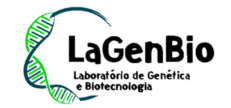Modeling the human mitochondrial bottleneck in vitro
Abstract
Diseases caused by mutations in mitochondrial DNA (mtDNA) affect ~1 in 4,300 people. In addition, almost every person carries very low levels of mutated mtDNA, which may be transmitted down to the maternal lineage and associate with late-onset degenerative diseases. Inheritance of mutated mtDNAs in germ cells relies upon the mitochondrial bottleneck, which results in drastic changes in the frequency of mtDNA variants within one generation. Yet, counteracting forces seem to act during specific stages of germline development to filter out pathogenic mutations in mtDNA. Mitochondria in the human germline differ from those of somatic tissues by their fragmented morphology, rounded shape and small size, suggesting fusion downregulation. In addition, the number of mtDNA molecules per mitochondrion is decreased in the germline to a level close to haploidy. These characteristics are expected to contribute with the bottleneck effect and the filter that prevents mutation expansion. Similarly, induction of somatic cells to reprogram into pluripotent stem cells (iPSCs) involves remodeling of the mitochondrial network, resulting in morphological and functional changes in mitochondria that closely resemble those in the germline. Moreover, both mtDNA copy number and the level of mutated mtDNA decrease during iPSC derivation, mimicking the bottleneck effect. This highlights the importance of mitochondrial remodeling in germ cells and places iPSC as a reliable model to study mtDNA inheritance in humans. Currently, it is challenging to estimate the mutation level that will be transmitted by a woman with mutated mtDNA. Moreover, in the case of oocytes containing high levels of mutated mtDNA, the mitochondrial replacement therapy (MRT) has been proposed as the only way of generating healthy offspring. However, this requires a healthy oocyte donor, which is challenging. In addition, pre-clinical studies with the MRT have shown unexpected ‘reversion’ to the original genotype in ~15% of cases. A complete understanding of the underlying mechanisms leading to shifts in the level of mutated mtDNA could be used to help generate healthy offspring, potentially even avoiding the need for in vitroembryo manipulation. Hence, we propose to establish a human model of the mitochondrial bottleneck based on in vitro specification of primordial germ cells (PGC)-like cells (PGCLCs) from iPSCs. In addition, we will manipulate mitochondrial dynamics during PGCLC specification to assess its impact on segregation of polymorphisms and pathogenic mtDNA variants.
